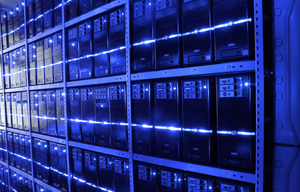How Is the SDDC Different? Let Us Count 3 of the WaysHow Is the SDDC Different? Let Us Count 3 of the Ways
To say that the software-defined data center (SDDC) is different than traditional data centers is putting it mildly. The term “sea change” is more like it.
April 27, 2016

 To say that the software-defined data center (SDDC) is different than traditional data centers is putting it mildly. The term “sea change” is more like it.
To say that the software-defined data center (SDDC) is different than traditional data centers is putting it mildly. The term “sea change” is more like it.
Indeed, Forrester Research has said that the potential impact of SDDC products is immense, “offering an integrated architecture merging legacy architectures, cloud computing, and workload-centric architectures into a single automation domain.”
To begin to gauge the impact that SDDC can have on MSPs and their customers, it’s important to understand some of the inherent differences between the SDDC and traditional data centers.
1. Everything is virtualized.
Elements of a traditional data center are virtualized, but an SDDC is fully virtualized. All server, networking and storage hardware are abstracted from the workloads that run in the SDDC. This enables MSPs to more flexibly and reliably deliver applications and services to customers.
2. Management is deeply embedded.
Via a cloud management platform, the SDDC offers organizations new levels of automation, insight and governance. Unlike legacy management tools, the cloud management platform is purpose-built and deeply integrated (with the underlying virtualization layer). All of this enables MSPs to more dynamically provision, manage and orchestrate resources to meet their own and their customers’ needs.
3. SDDCs are geographically agnostic.
SDDC resources can span data centers,, which enables MSPs to leverage the power of not only their own data center but also those of cloud service providers. Using the SDDC cloud management platform, MSPs can operate a hybrid cloud and create a competitive edge by offering unique packages of applications and services.
Of course, traditional data centers and SDDCs are alike and different in many ways, but the value of the SDDC lies in its ability to enable a more agile and streamlined organization. The more MSPs know about SDDC, the better prepared they will be to fully exploit the model.
About the Author
You May Also Like


